Physics on a sloping treadmill
[Today we decided to take a creative look at innovations - we also hope that this translation will inspire you to critically analyze controversial technological issues - approx. transl.]
Are running on an inclined treadmill and running in the mountains the same from a physical point of view? That's what scientists say about it.
One of the most popular exercises in the gym is a treadmill. Why not? You run or walk - this is a great way to load the cardiovascular system, make your body move, and for many people it is a great way to lose weight.
')
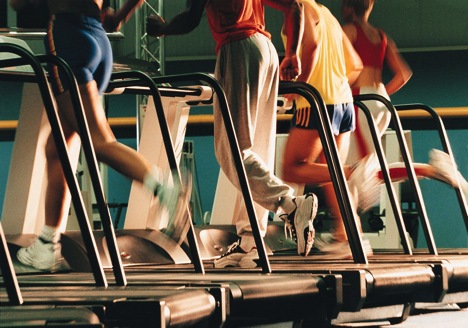
Regardless of what you do: walking, jogging or jogging, you can do one thing that will make your workout much more intense - tilt the track!
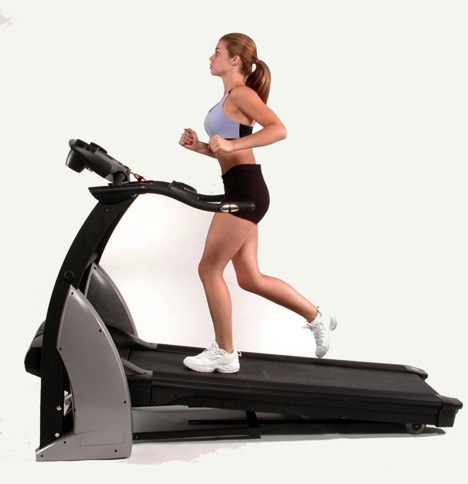
If you run / walk outdoors, you might be wondering if lifting and exercising on a plane is really equivalent or there is a fundamental difference between them. From the point of view of physiology, there are a huge number of differences between walking uphill and on a plane, but what do physicists say about this?

To set a solid foundation for our reasoning about the subject, let's start with basic concepts: if you are on a flat surface at ground level (or a treadmill), you stay at the same level in the gravitational field. With each step you take, gravity pulls you towards the center of the Earth, and since your legs must have an equal and absolute opposite effect on the ground in order to keep you from falling [ this is so-called normal support reaction - approx. transl.], you do not move up or down; you move only horizontally or perpendicular to gravity.
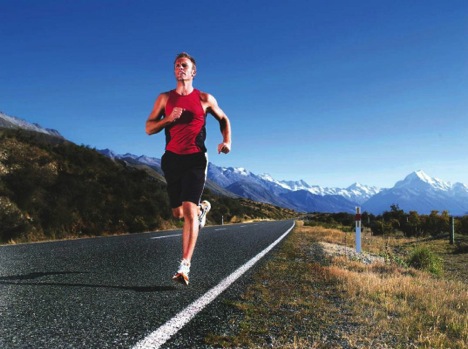
In physical terms, this means that you are not doing any work. Of course, you train hard, but as long as you move perpendicularly to force - in this case gravity - you are not doing any mechanical work .
But if you go uphill , you not only go straight, but regardless of your pace, you should, little by little, with each step, go beyond the gravitational field of the Earth [ that is, overcome gravity - approx. trans.].
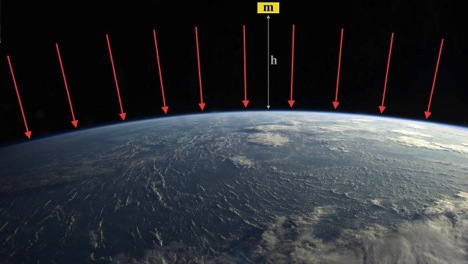
Earth's gravitational field is not lazy. My weight is 85 kilograms and for me the rise to a height of only 5 meters costs 4200 joules of energy or one calorie [ E = m * g * h = 85 * 9.8 * 5 ~ 50 * 85 ~ 4200 ~ 1 k. - approx. trans.].

In fact, if I climb to a height of 5 meters, I will burn much more than one calorie. Why? There are two most important reasons for this:
Oh yes, about the power of exercise [ about power in the physical sense - approx. trans.]. I am not a physiologist, and reason only from the point of view of physics. So, if we take as a basis the amount of additional energy that you need to spend on lifting, what can we say about the power of the exercises?
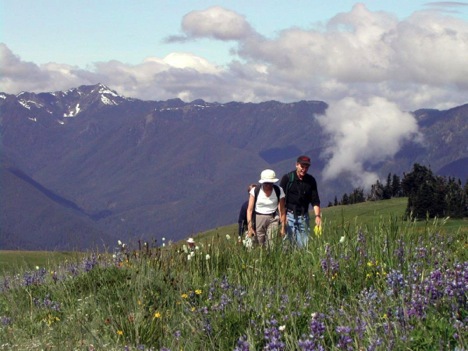
Let's make the auxiliary table. We will record in the table the distance traveled and the angle at which you walked, and see how much additional work you do.

This table is compiled for a person of 80 kg that is a little less than me. Impressive, isn't it?
We talked about climbing uphill, but what about the treadmill? Is there a difference between running on an inclined treadmill and walking on a regular mountain? Think about it. On the one hand, when you are on the track, you do not rise in the gravitational field, and in this sense there is a slight difference. But in reality, the difference between several hundred (or even several thousand ) meters in terms of the effect of gravity on your body is not very large [ this is obvious, if you recall the law of the world and the radius of the Earth - approx. trans.].

In both cases, you need to apply some of your strength in the direction opposite to the force of gravity of the Earth, in order to go on the surface - this means that you need to do work against gravity!
The only difference between an inclined running track and a straight mountain path is that if you stop while climbing a mountain, you will really stop, while on the track you will be blown down.

And in fact, there is no difference in whether the treadmill moves or rests: if you make an effort to climb it, then with each step you will have to do work. All other factors - including the speed of the track, the direction of movement of the belt and the height of the ascent - do not matter according to Einstein's equivalence principle . So, there is no difference between climbing a mountain and practicing on an inclined treadmill: in both cases you do the same physical work !
If only I could explain the movements of Roger G in Michael Jackson’s video “Bad” ... But that’s another story.
Are running on an inclined treadmill and running in the mountains the same from a physical point of view? That's what scientists say about it.
“You can’t really achieve anything without putting in an effort.” - Teddy Roosevelt
One of the most popular exercises in the gym is a treadmill. Why not? You run or walk - this is a great way to load the cardiovascular system, make your body move, and for many people it is a great way to lose weight.
')

Regardless of what you do: walking, jogging or jogging, you can do one thing that will make your workout much more intense - tilt the track!

If you run / walk outdoors, you might be wondering if lifting and exercising on a plane is really equivalent or there is a fundamental difference between them. From the point of view of physiology, there are a huge number of differences between walking uphill and on a plane, but what do physicists say about this?

To set a solid foundation for our reasoning about the subject, let's start with basic concepts: if you are on a flat surface at ground level (or a treadmill), you stay at the same level in the gravitational field. With each step you take, gravity pulls you towards the center of the Earth, and since your legs must have an equal and absolute opposite effect on the ground in order to keep you from falling [ this is so-called normal support reaction - approx. transl.], you do not move up or down; you move only horizontally or perpendicular to gravity.

In physical terms, this means that you are not doing any work. Of course, you train hard, but as long as you move perpendicularly to force - in this case gravity - you are not doing any mechanical work .
But if you go uphill , you not only go straight, but regardless of your pace, you should, little by little, with each step, go beyond the gravitational field of the Earth [ that is, overcome gravity - approx. trans.].

Earth's gravitational field is not lazy. My weight is 85 kilograms and for me the rise to a height of only 5 meters costs 4200 joules of energy or one calorie [ E = m * g * h = 85 * 9.8 * 5 ~ 50 * 85 ~ 4200 ~ 1 k. - approx. trans.].

In fact, if I climb to a height of 5 meters, I will burn much more than one calorie. Why? There are two most important reasons for this:
- My body is not a perfect engine. This means that in order to spend 4200 J, I need to get about three times more calories from food.
- When you exercise and then stop, your body does not know that you can immediately reduce your heart rate [ this is also called inertia of the body - approx. trans.]. Therefore, 60 minutes of walking uphill will increase my metabolic rate for more than one hour.
Oh yes, about the power of exercise [ about power in the physical sense - approx. trans.]. I am not a physiologist, and reason only from the point of view of physics. So, if we take as a basis the amount of additional energy that you need to spend on lifting, what can we say about the power of the exercises?

Let's make the auxiliary table. We will record in the table the distance traveled and the angle at which you walked, and see how much additional work you do.

This table is compiled for a person of 80 kg that is a little less than me. Impressive, isn't it?
We talked about climbing uphill, but what about the treadmill? Is there a difference between running on an inclined treadmill and walking on a regular mountain? Think about it. On the one hand, when you are on the track, you do not rise in the gravitational field, and in this sense there is a slight difference. But in reality, the difference between several hundred (or even several thousand ) meters in terms of the effect of gravity on your body is not very large [ this is obvious, if you recall the law of the world and the radius of the Earth - approx. trans.].

In both cases, you need to apply some of your strength in the direction opposite to the force of gravity of the Earth, in order to go on the surface - this means that you need to do work against gravity!
The only difference between an inclined running track and a straight mountain path is that if you stop while climbing a mountain, you will really stop, while on the track you will be blown down.

And in fact, there is no difference in whether the treadmill moves or rests: if you make an effort to climb it, then with each step you will have to do work. All other factors - including the speed of the track, the direction of movement of the belt and the height of the ascent - do not matter according to Einstein's equivalence principle . So, there is no difference between climbing a mountain and practicing on an inclined treadmill: in both cases you do the same physical work !
If only I could explain the movements of Roger G in Michael Jackson’s video “Bad” ... But that’s another story.
Source: https://habr.com/ru/post/221953/
All Articles